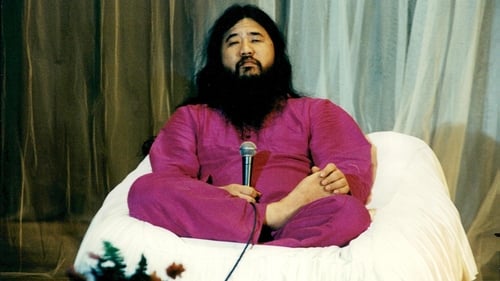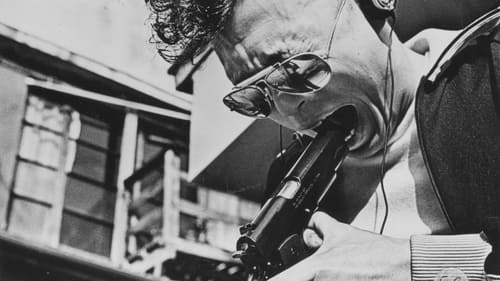Tatsuya Mori
出生 : 1956-05-10, Kure, Hiroshima Prefecture, Japan

Director
Based on the murder of nine street peddlers in the aftermath of the Great Kanto earthquake

Cinematography
既存メディアからも異端視される新聞記者、望月衣塑子。権力者たちの疑惑を追求しようと孤軍奮闘するものの、大きな壁や計り知れない重圧にぶつかってしまう。

Director
既存メディアからも異端視される新聞記者、望月衣塑子。権力者たちの疑惑を追求しようと孤軍奮闘するものの、大きな壁や計り知れない重圧にぶつかってしまう。

Cinematography
Born to atomic bomb survivors in Hiroshima, Mamoru Samuragochi, a self-taught classical composer with a degenerative condition causing deafness, was celebrated as a "Japanese Beethoven" for the digital age. However, just prior to the 2014 Winter Olympics, where Samuragochi's "Sonatina for Violin" was to accompany figure skater Daisuke Takahashi, part-time university lecturer Takashi Niigaki revealed that he had served as the composer's ghostwriter for 18 years, that Samuragochi couldn't notate music and, in fact, could hear perfectly. As Samuragochi's recordings were pulled and performances cancelled, Niigaki enjoyed success on TV talk shows. Filmmaker Tatsuya Mori finds Samuragochi in his small Yokohama apartment with his wife and cat, ready to tell his side of the story. A mesmerizing character study skewering media duplicity and constructions of ability/disability, in which Samuragochi's career has collapsed, taking fact and fiction with it.

Director
Born to atomic bomb survivors in Hiroshima, Mamoru Samuragochi, a self-taught classical composer with a degenerative condition causing deafness, was celebrated as a "Japanese Beethoven" for the digital age. However, just prior to the 2014 Winter Olympics, where Samuragochi's "Sonatina for Violin" was to accompany figure skater Daisuke Takahashi, part-time university lecturer Takashi Niigaki revealed that he had served as the composer's ghostwriter for 18 years, that Samuragochi couldn't notate music and, in fact, could hear perfectly. As Samuragochi's recordings were pulled and performances cancelled, Niigaki enjoyed success on TV talk shows. Filmmaker Tatsuya Mori finds Samuragochi in his small Yokohama apartment with his wife and cat, ready to tell his side of the story. A mesmerizing character study skewering media duplicity and constructions of ability/disability, in which Samuragochi's career has collapsed, taking fact and fiction with it.

Born to atomic bomb survivors in Hiroshima, Mamoru Samuragochi, a self-taught classical composer with a degenerative condition causing deafness, was celebrated as a "Japanese Beethoven" for the digital age. However, just prior to the 2014 Winter Olympics, where Samuragochi's "Sonatina for Violin" was to accompany figure skater Daisuke Takahashi, part-time university lecturer Takashi Niigaki revealed that he had served as the composer's ghostwriter for 18 years, that Samuragochi couldn't notate music and, in fact, could hear perfectly. As Samuragochi's recordings were pulled and performances cancelled, Niigaki enjoyed success on TV talk shows. Filmmaker Tatsuya Mori finds Samuragochi in his small Yokohama apartment with his wife and cat, ready to tell his side of the story. A mesmerizing character study skewering media duplicity and constructions of ability/disability, in which Samuragochi's career has collapsed, taking fact and fiction with it.

Director
Two weeks after the earthquake, writer and movie director Tatsuya Mori, journalist Takeharu Watai, movie director Yojyu Matsubayashi, and movie producer Takuji Yasuoka, headed for the disaster stricken area, not thinking this film would become a production. "Only to confirm the situation" was their common objective.

Editor
A2 is a continuation of director Tatsuya Mori's film A (1998), an incredible view inside the compound of Japan's Aum Shinrikyo cult after its leaders carried out the deadly sarin gas attacks on the Tokyo subway in 1995. Most followers had no idea that the attacks were being planned, or even that their new religion had violent aspirations. After the attacks, these followers were left to rebuild the religion where they had once found peace in the face of overwhelming, and understandable, condemnation from the rest of Japan. Central focus is placed on Hiroshi Araki, a young man who finds himself elevated to chief spokesman for Aum after its leaders are arrested. Araki faces extreme hostility from the Japanese public, who find it hard to believe that most followers of the cult had no idea of the attacks and even harder to understand why these followers remain devoted to the religion, if not the violence.

Cinematography
A2 is a continuation of director Tatsuya Mori's film A (1998), an incredible view inside the compound of Japan's Aum Shinrikyo cult after its leaders carried out the deadly sarin gas attacks on the Tokyo subway in 1995. Most followers had no idea that the attacks were being planned, or even that their new religion had violent aspirations. After the attacks, these followers were left to rebuild the religion where they had once found peace in the face of overwhelming, and understandable, condemnation from the rest of Japan. Central focus is placed on Hiroshi Araki, a young man who finds himself elevated to chief spokesman for Aum after its leaders are arrested. Araki faces extreme hostility from the Japanese public, who find it hard to believe that most followers of the cult had no idea of the attacks and even harder to understand why these followers remain devoted to the religion, if not the violence.

Director
A2 is a continuation of director Tatsuya Mori's film A (1998), an incredible view inside the compound of Japan's Aum Shinrikyo cult after its leaders carried out the deadly sarin gas attacks on the Tokyo subway in 1995. Most followers had no idea that the attacks were being planned, or even that their new religion had violent aspirations. After the attacks, these followers were left to rebuild the religion where they had once found peace in the face of overwhelming, and understandable, condemnation from the rest of Japan. Central focus is placed on Hiroshi Araki, a young man who finds himself elevated to chief spokesman for Aum after its leaders are arrested. Araki faces extreme hostility from the Japanese public, who find it hard to believe that most followers of the cult had no idea of the attacks and even harder to understand why these followers remain devoted to the religion, if not the violence.

Editor
Roughly chronological, from 3/96 to 11/96, with a coda in spring of 1997: inside compounds of Aum Shinrikyo, a Buddhist sect led by Shoko Asahara. (Members confessed to a murderous sarin attack in the Tokyo subway in 1995.) We see what they eat, where they sleep, and how they respond to media scrutiny, on-going trials, the shrinking of their fortunes, and the criticism of society. Central focus is placed on Hiroshi Araki, a young man who finds himself elevated to chief spokesman for Aum after its leaders are arrested. Araki faces extreme hostility from the Japanese public, who find it hard to believe that most followers of the cult had no idea of the attacks and even harder to understand why these followers remain devoted to the religion, if not the violence.

Cinematography
Roughly chronological, from 3/96 to 11/96, with a coda in spring of 1997: inside compounds of Aum Shinrikyo, a Buddhist sect led by Shoko Asahara. (Members confessed to a murderous sarin attack in the Tokyo subway in 1995.) We see what they eat, where they sleep, and how they respond to media scrutiny, on-going trials, the shrinking of their fortunes, and the criticism of society. Central focus is placed on Hiroshi Araki, a young man who finds himself elevated to chief spokesman for Aum after its leaders are arrested. Araki faces extreme hostility from the Japanese public, who find it hard to believe that most followers of the cult had no idea of the attacks and even harder to understand why these followers remain devoted to the religion, if not the violence.

Director
Roughly chronological, from 3/96 to 11/96, with a coda in spring of 1997: inside compounds of Aum Shinrikyo, a Buddhist sect led by Shoko Asahara. (Members confessed to a murderous sarin attack in the Tokyo subway in 1995.) We see what they eat, where they sleep, and how they respond to media scrutiny, on-going trials, the shrinking of their fortunes, and the criticism of society. Central focus is placed on Hiroshi Araki, a young man who finds himself elevated to chief spokesman for Aum after its leaders are arrested. Araki faces extreme hostility from the Japanese public, who find it hard to believe that most followers of the cult had no idea of the attacks and even harder to understand why these followers remain devoted to the religion, if not the violence.

Detective
Hiroshi Kobayashi is on the run from police who would arrest him for the murder of his girlfriend Naomi. At the same time, he wants revenge on the yakuza member Kimura who got her stuck in drugs. The entire film consists of a long hunting-scene.









